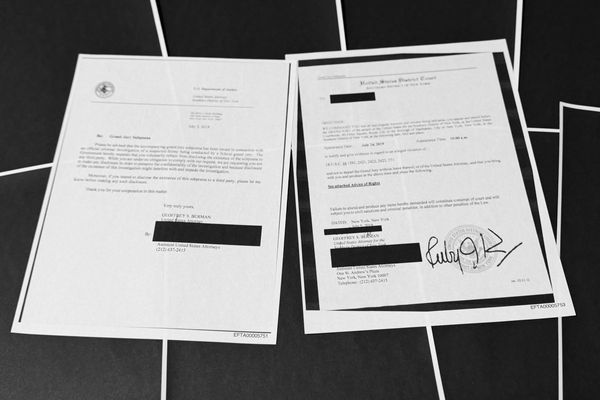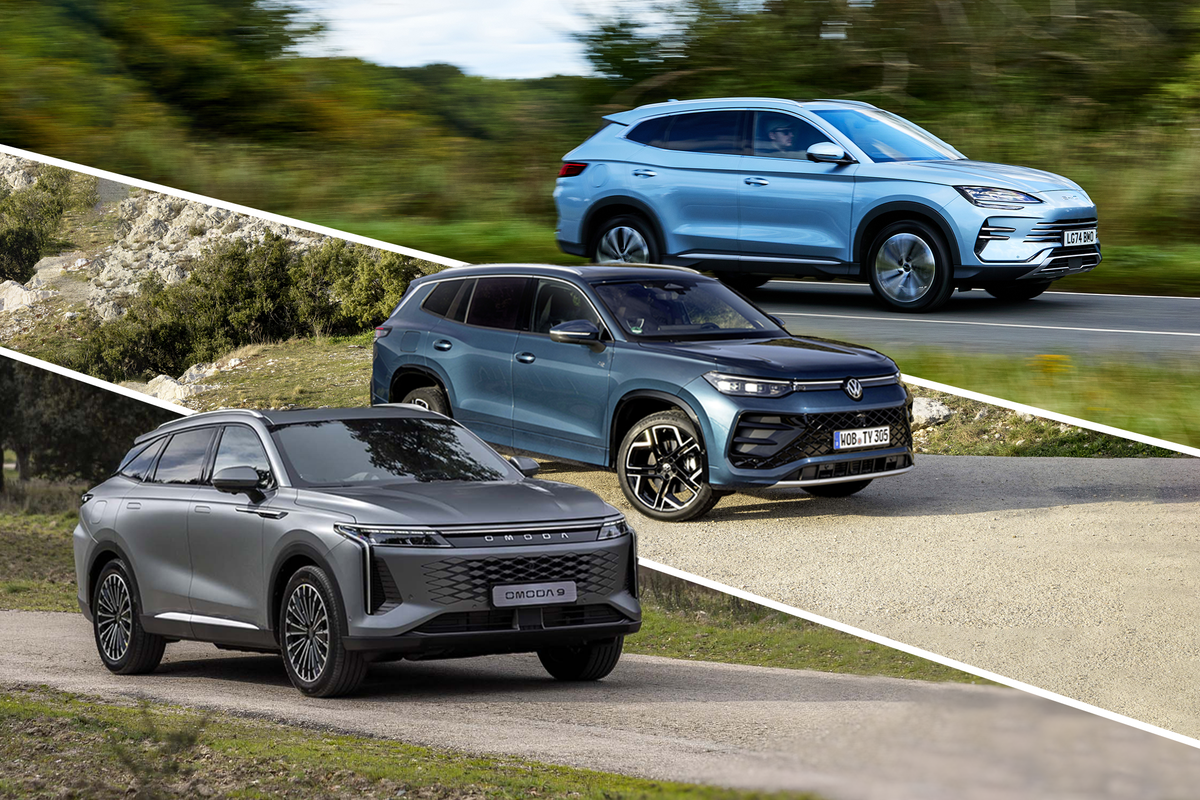
Plug-in hybrid SUVs promise the best of both worlds: cheap, silent, zero-emission electric for the daily school run, combined with the long-distance convenience of a petrol engine for family getaways. We recently reviewed three popular PHEVs with three distinct strengths: the affordable BYD Seal U DM-i, the long-range Omoda 9 and the spacious Volkswagen Tayron.
But how do these three PHEVs compare on the road? BYD and Omoda are two Chinese brands out to upset the established order with cut-throat pricing, fancy equipment and advanced hybrid technology. From Germany, Volkswagen has a strong footing with its reputation for quality, comfort and sophisticated engineering.
One thing is obvious – families looking for a practical EV have more choice than ever in 2025. To help you decide which plug-in hybrid SUV is best for you, we’ve analysed all three.
BYD Seal U DM-i: From £33,315, BYD.com

Independent rating: 9/10
- Pros: Loads of space, frugal, incredible value
- Cons: Dynamics lack a little sophistication
BYD Seal U D-Mi specs
- Price range: £33,315 to £39,905
- Battery size: 18.3kWh & 26.6kWh
- Max EV range: 78 miles
- Engine: 1.5-litre petrol
- Max battery & engine range: 706 miles
- Max charging rate: 18kW
Omoda 9: From £44,990, Omodaauto.co.uk
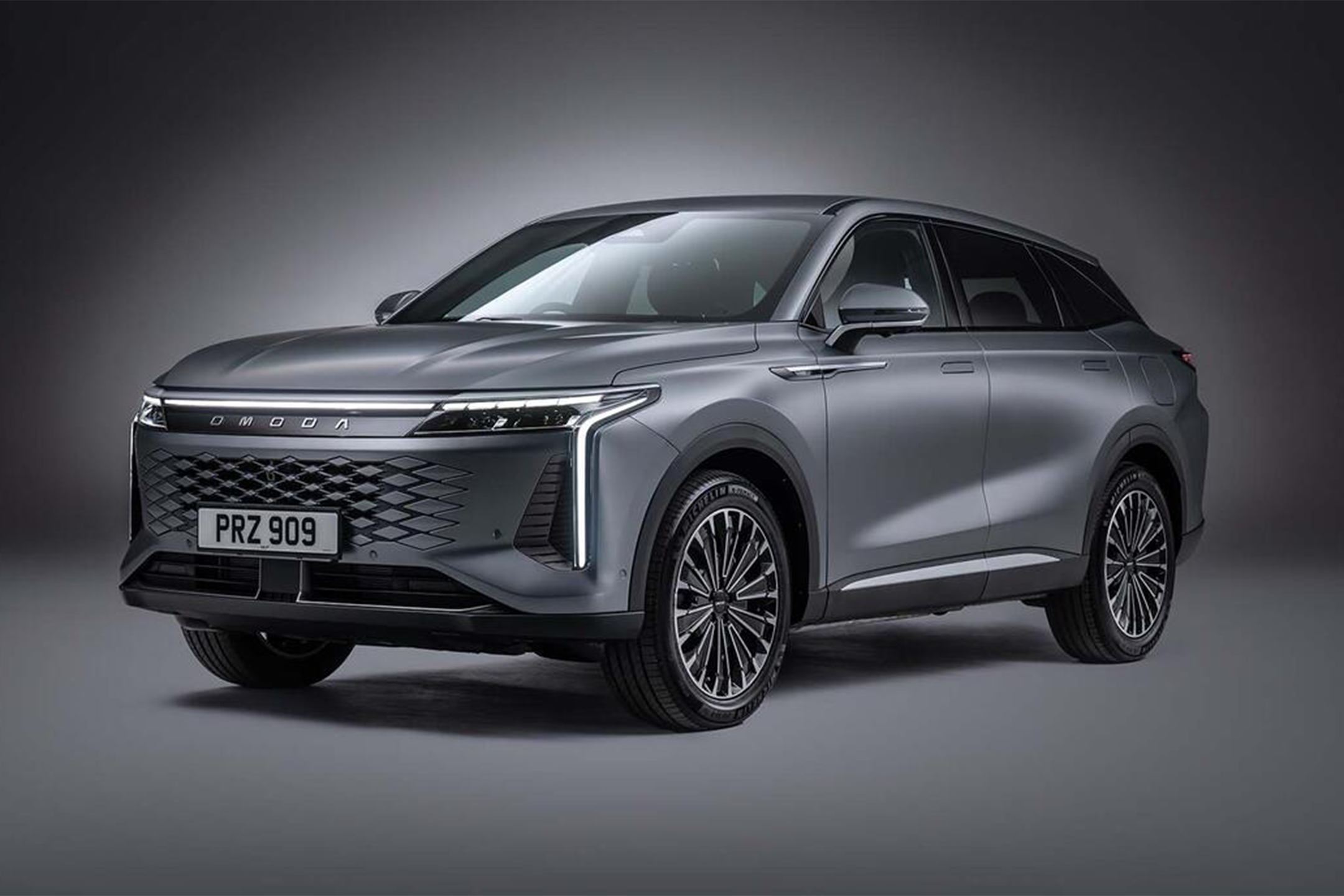
Independent rating: 6/10
- Pros: Excellent efficiency, long EV range, loads of space
- Cons: Poor ride quality, infuriating infotainment, pricey
Omoda 9 specs
- Price: £44,990
- Battery size: 34kWh
- Max EV range: 93 miles
- Engine: 1.5-litre petrol
- Max battery & engine range: Over 700 miles
- Max charging rate: 80kW
Volkswagen Tayron: From £41,010, Volkswagen.co.uk
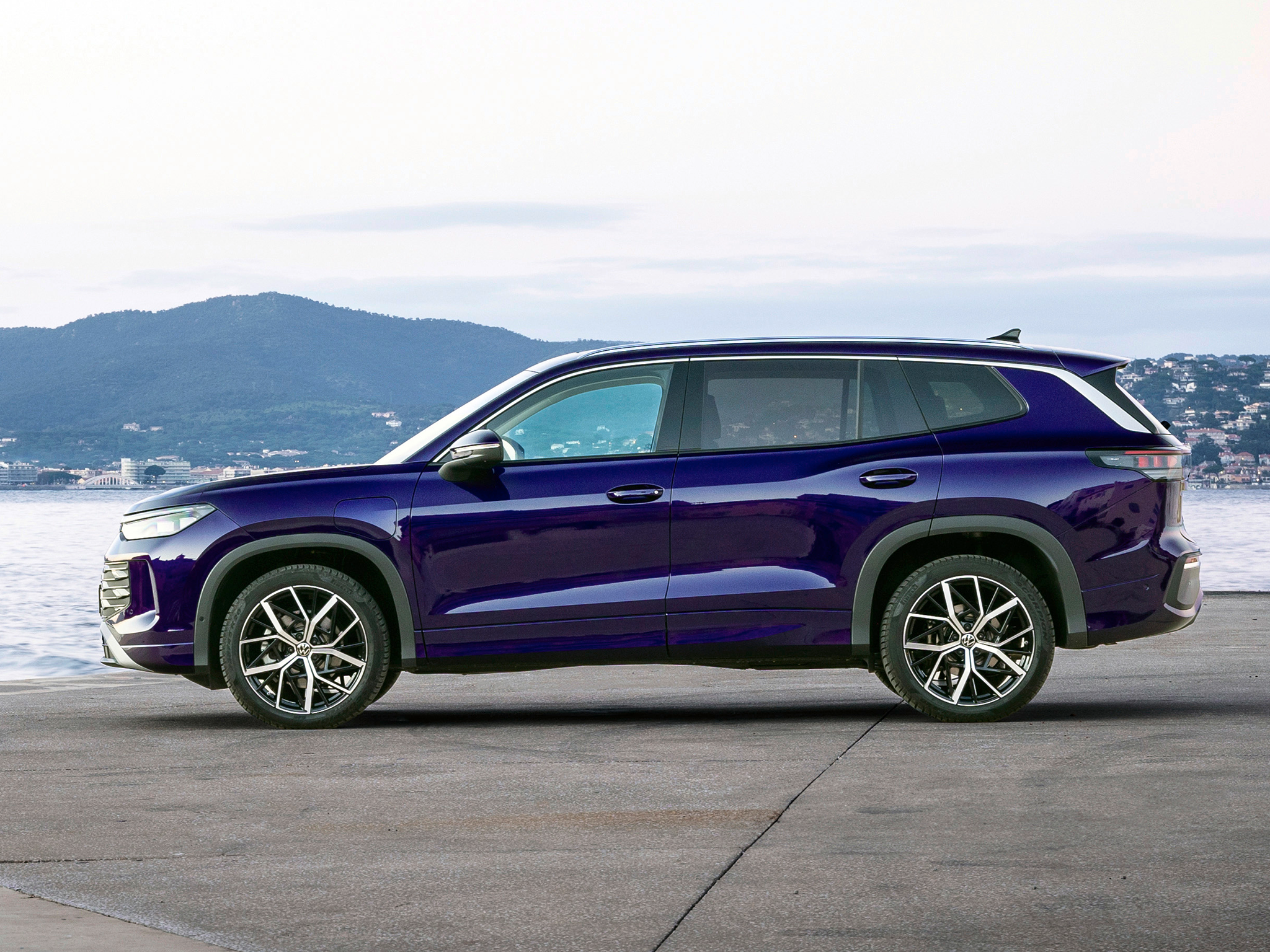
Independent rating: 7/10
- Pros: Loads of space, comfortable drive, strong quality
- Cons: Lacks the seven seats of other Tayron models
Volkswagen Tayron specs
- Price range: £41,010 to £50,100
- Battery size: 19.7kWh
- Maximum EV range: 75 miles
- Engine: 1.5-litre petrol
- Max battery & engine range: 559 miles
- Max charging rate: 40kW
Price and value
This is where established European players like Volkswagen are feeling the most pressure, and the result is a knockout blow for BYD, which arrives with a starting price of just £33,315. In our BYD Seal U DM-i review we called it “Britain’s best value new car,” noting that it costs a full £10,000 less than the larger Tayron. The entry-level BYD doesn’t cut corners either, coming fully loaded with premium kit like a panoramic sunroof and heated/cooled seats.
The Volkswagen Tayron starts at £41,010, positioning itself as a premium offering in the family PHEV category. While it delivers better quality and more space for the money, we don’t think it adds up to an extra £10k on the invoice versus the BYD.
There’s no getting around that the Omoda is an expensive car at £44,990. The car’s high price was a sticking point in our Omoda 9 review, in which we were otherwise impressed by the overall quality and the generous amount of standard kit.
Winner: BYD Seal U DM-i. The combination of a low purchase price and a huge equipment list must be keeping competitors up at night.
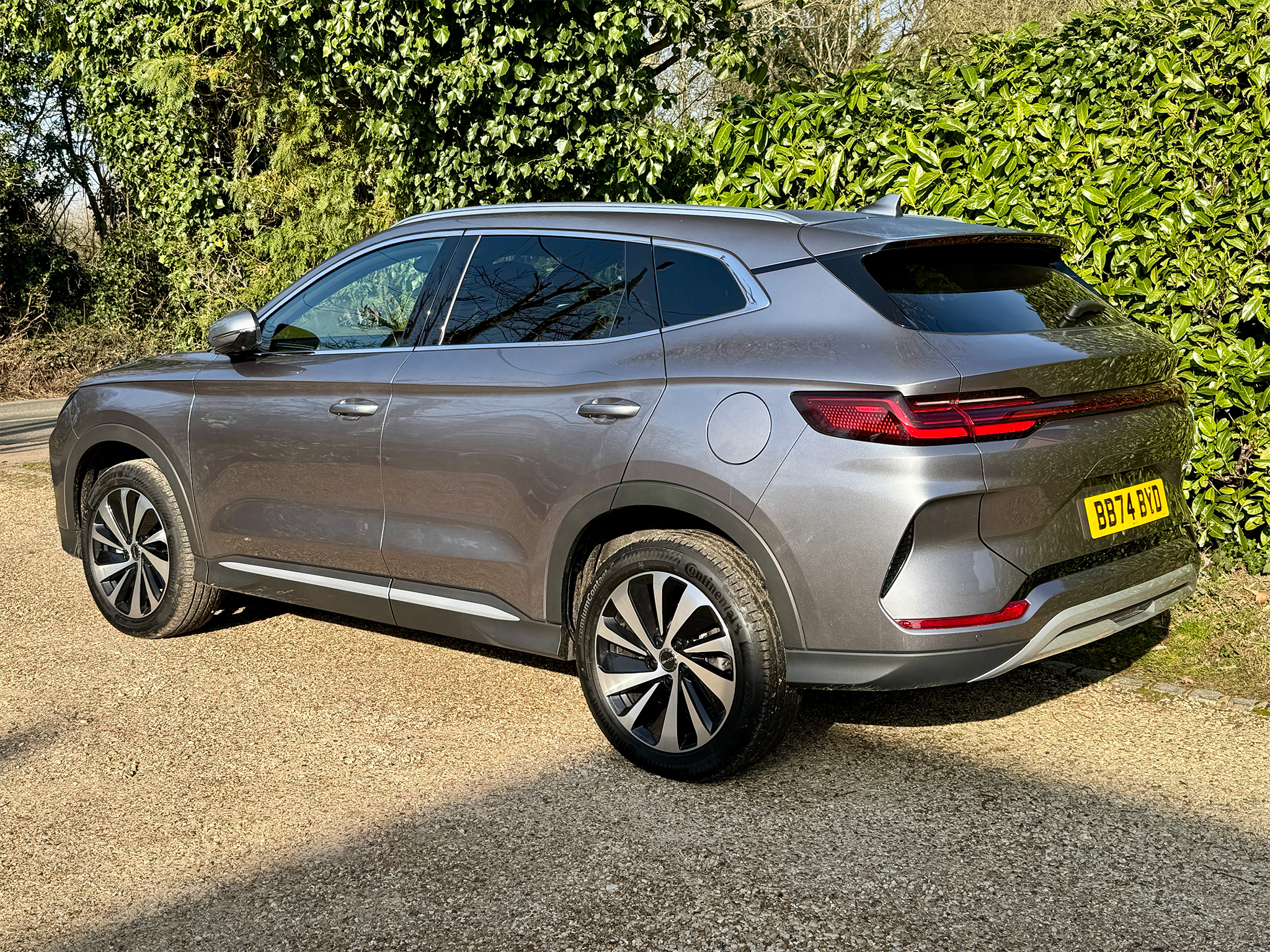
Battery, range, and performance
Each of our three PHEVs offers a different take on hybrid technology. The Omoda 9 is the clear range champion, combining a 1.5-litre turbo petrol engine with a huge (for a PHEV at least) 34kWh battery. This results in an impressive claimed electric range of 93 miles and a combined range of over 700 miles. It’s the most powerful of the three, with 443bhp delivering a 4.9s 0-62mph time. Not content with that, the Omoda 9 also boasts the fastest DC charging at 80kW.
The Volkswagen Tayron uses a 19.7kWh battery, which is good for a very useful 75 mile electric range – enough for most people, most of the time. Its 1.5-litre petrol engine is surprisingly vocal under acceleration, but the overall system is smooth. VW’s claim of almost 600 miles of total EV and petrol range is a tad optimistic – you can expect less under real world conditions – while its 40kW DC charging is easily adequate for a PHEV.
The BYD Seal U DM-i offers two battery sizes, with the larger 26.6kWh pack providing a strong 78 mile electric range. The “DM-i” system mostly uses the bespoke 1.5-litre petrol engine as a generator to charge the battery, only occasionally driving the wheels directly. This makes it incredibly efficient. In our BYD Seal U DM-i review, we were impressed that over 200 miles of range remained after a 400 mile round trip. The 18kW DC charging is the slowest of the trio but – as with the Tayron and Omoda – you’ll likely be plugging in at home most often that it hardly matters.
Winner: Omoda 9. Its class-leading 93 mile electric range gives it a practical advantage for those who want to maximise their time on battery power.

Performance and drive
Comfort and ride quality are high on the priority list for any family car, and it’s the Volkswagen Tayron that feels the most sophisticated on the road. In our Volkswagen Tayron review we praised its comfortable ride, aided by adaptive dampers, and noted its nicely reactive steering and composed handling.
The BYD Seal U DM-i is comfortable enough but lacks the Tayron’s polish. We described the ride as a “mixed bag, feeling a bit floaty at times and a bit firm over potholes,” while the steering is a bit lifeless versus the super-composed and reactive Volkswagen.
The Omoda 9 is where things fall apart. In our Omoda 9 review we found the ride quality to be a bit of a mess, busily fidgeting and bumping over surfaces, and the brakes grabby and difficult to modulate smoothly. Minor shortcomings that undermine an otherwise premium EV.
Winner: Volkswagen Tayron. It delivers the most comfortable, composed and sophisticated driving experience by some margin.

Interior and practicality
A family SUV isn’t worth considering if it can’t comfortably fit the entire family. The Volkswagen Tayron is the undisputed king of space, offers loads of rear legroom and a massive 705 litre boot, making it the most practical choice for families who regularly need to haul a lot of stuff around. The interior is typical VW – not adventurous, but beautifully built and easy to use.
The BYD Seal U DM-i also impresses with its spacious cabin and wide-opening rear doors. The interior feels surprisingly upmarket for its price, with soft-touch materials and a premium design, but passenger comfort comes at the expense of boot space. At 425 litres you get a lot less room than in the Tayron.
The Omoda 9 offers an attractive and high-quality interior that feels upmarket, and its 660 litre boot is near enough the Tayron’s as makes no difference. However, in our Omoda 9 review we found drawbacks in the oddly high-set driving position and poor rear visibility.
Winner: Volkswagen Tayron. Its enormous boot and vast rear passenger space make it the most practical and family-friendly SUV of the three.

Technology and infotainment
All three vehicles come loaded with technology, but usability varies. The BYD Seal U DM-i gets the nod for its fantastic 15.6in rotating touchscreen, which supports wireless Apple CarPlay and Android Auto. The system is intuitive, and the car comes with an impressive level of tech as standard, including a head-up display and a 10-speaker Infinity audio system. In fact, all models get the same level of kit.
The Volkswagen Tayron features an improved version of VW’s infotainment system with a large screen and the welcome return of physical steering wheel buttons. Voice control with ChatGPT integration is a nice touch, but some of the touchscreen buttons can still be fiddly.
The Omoda 9 has an impressive kit list, but the usability is just plain poor. Getting back to the car’s native menus from Apple CarPlay is a pain, and the driver assistance systems are infuriatingly intrusive, with near-constant binging and bonging of warning signals.
Winner: BYD Seal U DM-i. It offers a brilliant, user-friendly screen and a remarkable level of standard tech for the price.
The verdict: What’s the best plug-in hybrid family SUV?
So we have three plug-in hybrid family SUVs with three different but compelling value propositions. The Volkswagen Tayron is the most spacious and best to drive, but it’s expensive. The Omoda 9 boasts a phenomenal electric range but is let down by a poor ride, frustrating tech and another spicy price tag.
This leaves the BYD Seal U DM-i as our overall winner. The newcomer demolishes rivals on price while still offering a spacious, high-quality and tech-laden cabin, and an efficient and clever hybrid system.
For just over £33,000, you get a family SUV that does almost everything well, at a price that the competition simply can’t touch. The BYD Seal U DM-i is the benchmark for plug-in hybrid family SUVs.
Tesla Model 3 vs BYD Seal vs MG IM5 – which EV is best?
From Abbey Road to your road – how Polestar squeezed The Beatles’ legendary studio into a car
BYD Atto 2 review: This family-friendly EV can’t compete on price
Best used electric cars 2025: Top 10 second-hand EVs to buy
Ford Puma Gen-E first to get full £3,750 discount under government’s new EV grant
Best long-range electric cars 2025: Top 12 EVs that go the distance

